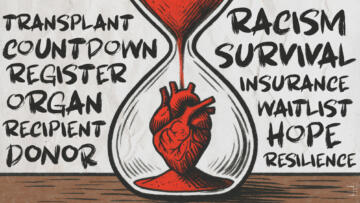Data Is Plural is a weekly newsletter of useful/curious datasets. This edition, dated June 15, 2022, has been republished with permission of the author.
Consumer prices. The U.S. Bureau of Labor Statistics’ widely-cited Consumer Price Index measures “the average change over time in the prices paid by urban consumers for a market basket of consumer goods and services.” In addition to overall averages, the index provides decades of detailed data on monthly price changes for hundreds of sub-baskets, ranging from broad groupings (e.g., apparel, housing, education) to narrower categories (e.g., frozen vegetables, window coverings, veterinarian services). [h/t Mike Reilley]
Incarceration and redistricting. The U.S. Census counts prisoners as residing where they are incarcerated. In 2010, however, New York passed a law requiring the state to adjust these figures for redistricting purposes, reassigning people in state and federal prisons to their pre-incarceration addresses. Those adjusted counts, down to the Census block level, are available for 2010 and 2020. A new report from the Prison Policy Initiative and VOCAL-NY cross-references the 2020 data with the original Census numbers to determine state prison incarceration rates for each county, city, zip code, and other geographies. PPI says it plans to issue similar reports for other states that have enacted comparable reforms. [h/t Mike Wessler]
Drug combinations. Guy Shtar et al.’s Continuous Drug Combination Database identifies 17,000-plus unique medical drug combinations that have generated clinical interest, “curated automatically” from ClinicalTrials.gov (DIP 2018.05.09), the FDA’s Orange Book (DIP 2017.03.08), and international patent records. The automated approach allows the database to be “continuously updated,” with new versions published weekly.
Airplane laser incidents. “Aiming a laser at an aircraft is a serious safety risk and violates federal law,” according to the Federal Aviation Administration, which encourages flight staff and the public to submit reports of such incidents. The agency publishes annual spreadsheets of each reported incident since 2010, listing the date and time, flight number, aircraft model, altitude, local airport, laser color, and an injury indicator.
European royal families. In “A Network of Thrones,” economists Seth G. Benzell and Kevin Cooke describe building a dataset that links “European royal kinship networks, monarchies, and wars to study the effect of family ties on conflict” between 1495 and 1918. The kinship records come from Brian Tompsett’s Directory of Royal Genealogical Data, which covers “almost every ruling house in the western world.” Related: Andrej Kokkonen et al. have compiled a dataset of “royal offspring, siblings, and paternal uncles and aunts” for 27 European monarchies from 1000 to 1799. Previously: European monarchs (DIP 2019.06.19). [h/t Phenomenal World + Kevin Lewis]
Notice: Unlike most of our content, this edition of Data Is Plural by Jeremy Singer-Vine is not available for republication under a Creative Commons license.




